Guide To Develop Wooden Toy
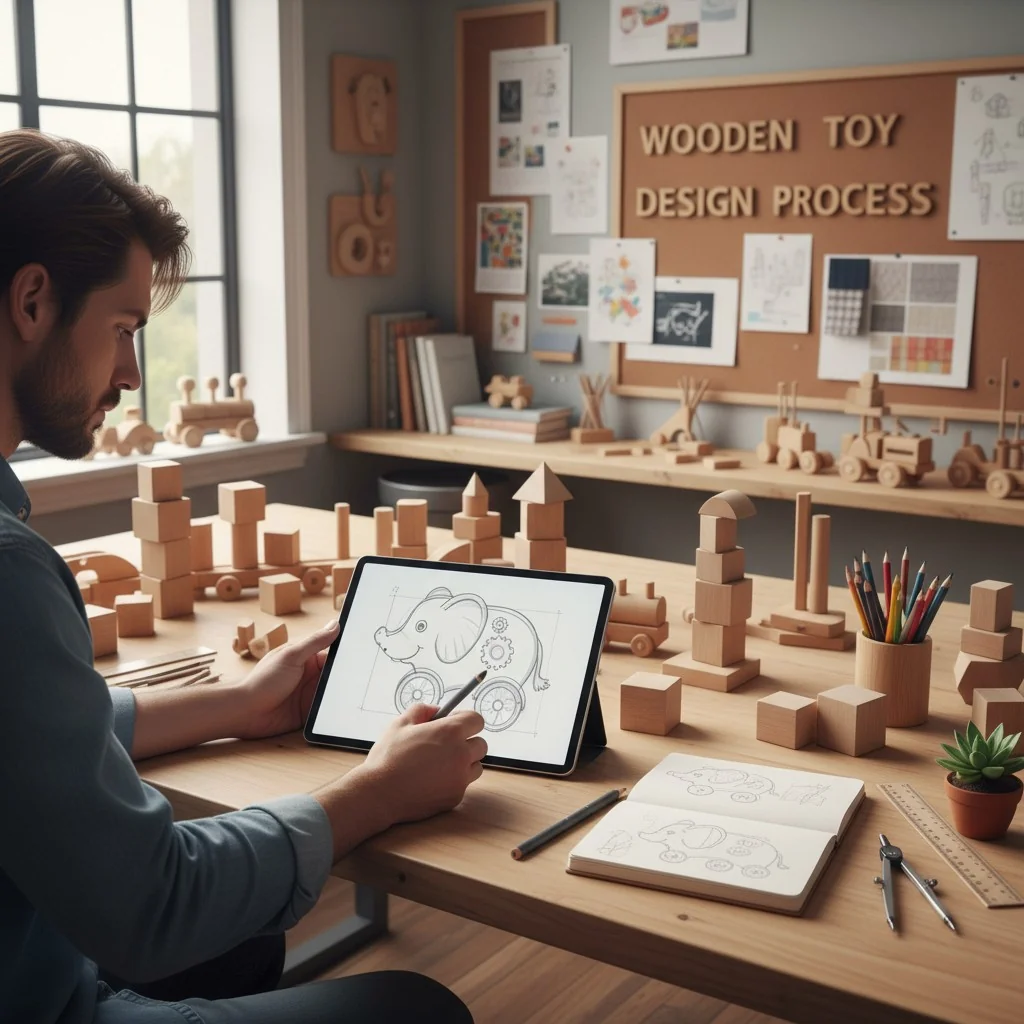
Bringing your wooden toy idea to life feels overwhelming. Manufacturing overseas adds risks of poor quality and delays. I will show you how to navigate this process successfully.
The best way to develop a wooden toy is by partnering with an experienced manufacturer[^1]. They should guide you from design and prototyping to material selection, safety testing, and final delivery. This ensures your toy is high-quality, safe, and cost-effective.
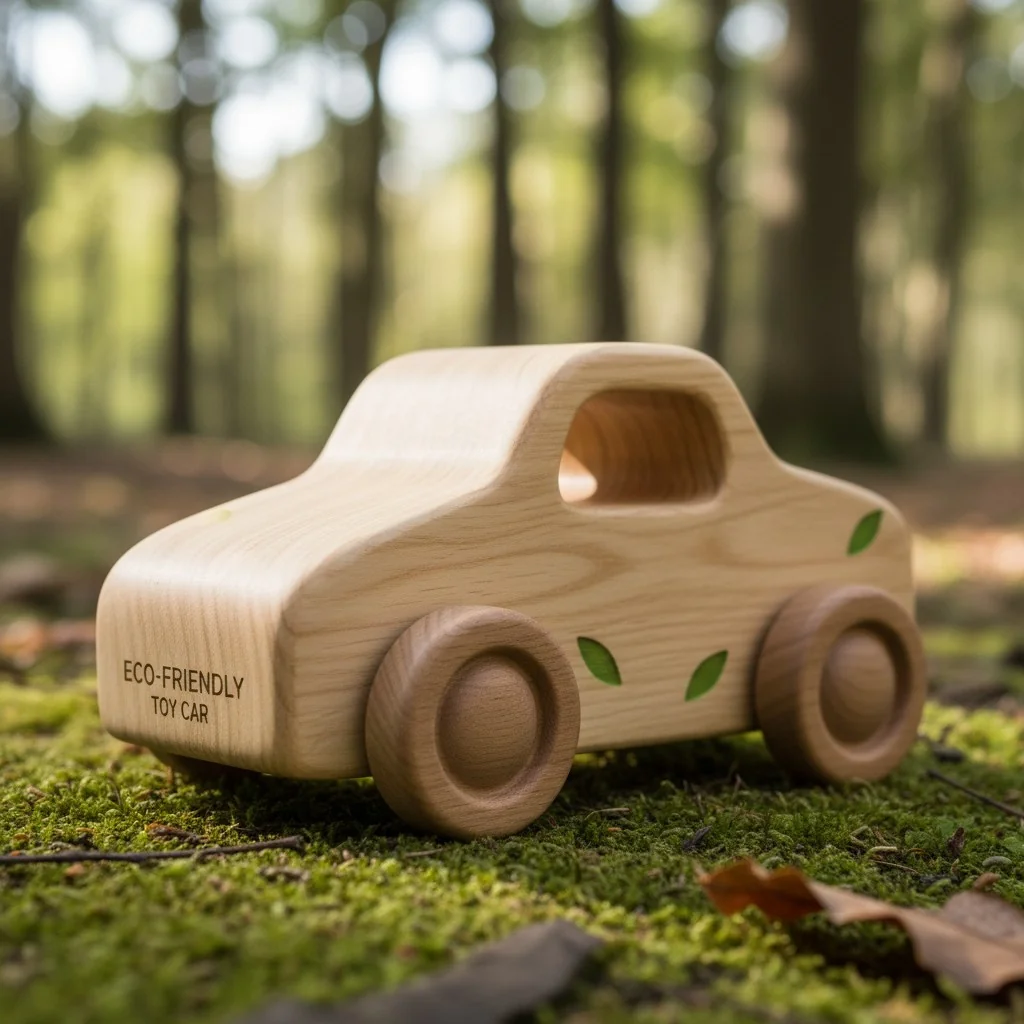
When I first started in the mold and manufacturing industry, I saw many great ideas fail. They failed not because the idea was bad, but because the execution was flawed. The journey from a simple sketch to a child's hands is filled with challenges, especially with a natural material like wood. You need a clear roadmap. Over my 15 years in this business, I've learned the ins and outs of turning concepts into reality, and I want to share that knowledge with you. Let's break down how you can develop your wooden toy, step by step.
All wooden toys are naturally eco-friendly.False
Not all wood is sourced sustainably. Look for certifications like FSC (Forest Stewardship Council) to ensure the material is from responsibly managed forests. The paints and finishes used must also be non-toxic.
China is a leading global manufacturer of wooden toys.True
China has a massive and well-established manufacturing infrastructure for toys, including a deep supply chain for various types of wood, hardware, and packaging, offering significant cost and production advantages.
How does wooden toy research and development work?
You have a brilliant idea for a toy, but turning it into a physical product is a huge challenge. The research and development (R&D) process seems complex and expensive.
wooden toy R&D[^2] is a structured process. It starts with your concept and moves through sketching, 3D modeling, material selection, and prototyping. The goal is to create a toy that is fun, safe, and easy to manufacture.
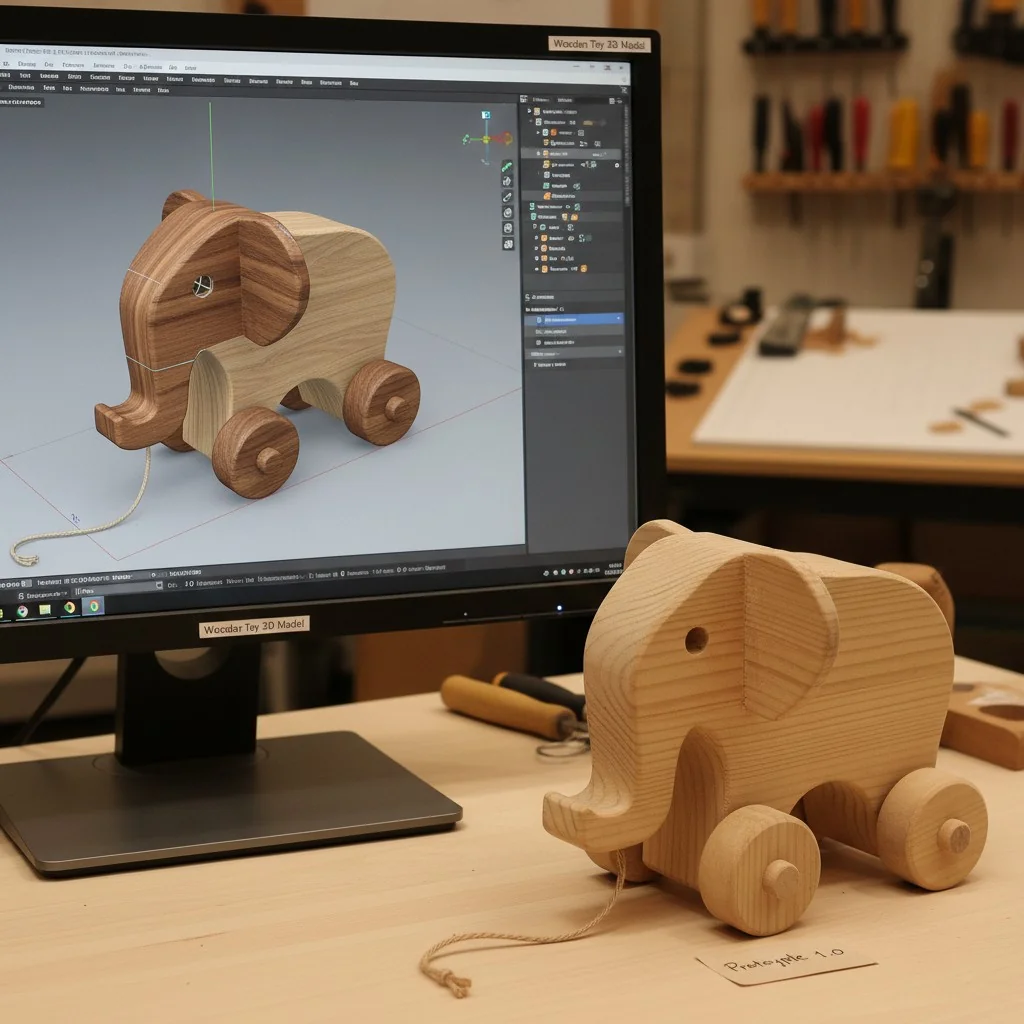
The R&D phase is where your idea takes shape. It's the most critical stage for getting things right. A good partner can often provide free design support to help refine your concept. My team and I have helped countless clients through this. We focus on a few key steps to ensure a smooth process.
1. Concept and Sketching
Everything begins with your vision. We start by creating detailed sketches. This helps us explore different designs and play features. We think about the target age group and how a child will interact with the toy. This is the cheapest and fastest way to make changes before committing to a physical model.
2. 3D Modeling and Prototyping
Once the sketch is approved, we create a 3D digital model. This allows you to see the toy from every angle. We can check for any potential design flaws. After the 3D model is finalized, we create a physical prototype. Holding the prototype in your hands is a game-changer. You can test its feel, balance, and function.
3. Material and Safety Analysis
We analyze the best materials for your toy. For wooden toys, this is crucial. We consider durability, appearance, and cost. We also ensure all materials, especially paints and finishes, are non-toxic and safe for children.
| Wood Type | Key Characteristics | Best For |
|---|---|---|
| Beech | Hard, durable, smooth grain | Blocks, vehicles, high-impact toys |
| Birch | Strong, fine-grained, cost-effective | Puzzles, smaller toys, painted items |
| Pine | Soft, lightweight, visible grain | Larger, simpler items, rustic look |
3D printing is useless for wooden toy prototyping.False
While not made of wood, 3D-printed prototypes are incredibly useful and cost-effective for checking the size, shape, and assembly of a design before committing to more expensive wood CNC machining or hand-carving.
The choice of paint is as important as the choice of wood for toy safety.True
Toys for children must use non-toxic, water-based paints that comply with international safety standards like ASTM F963 and EN-71, which test for lead and other harmful heavy metals.
What's the ultimate guide to buying wooden toys in China?
You know manufacturing in China can save you money. But finding a trustworthy partner who delivers on time and meets your quality standards feels like finding a needle in a haystack.
The key is to partner with a manufacturer offering full-service OEM (Original Equipment Manufacturer) and ODM (Original Design Manufacturer) capabilities. Look for a proven track record, transparent communication, and robust quality control[^3] systems to guide you from start to finish.
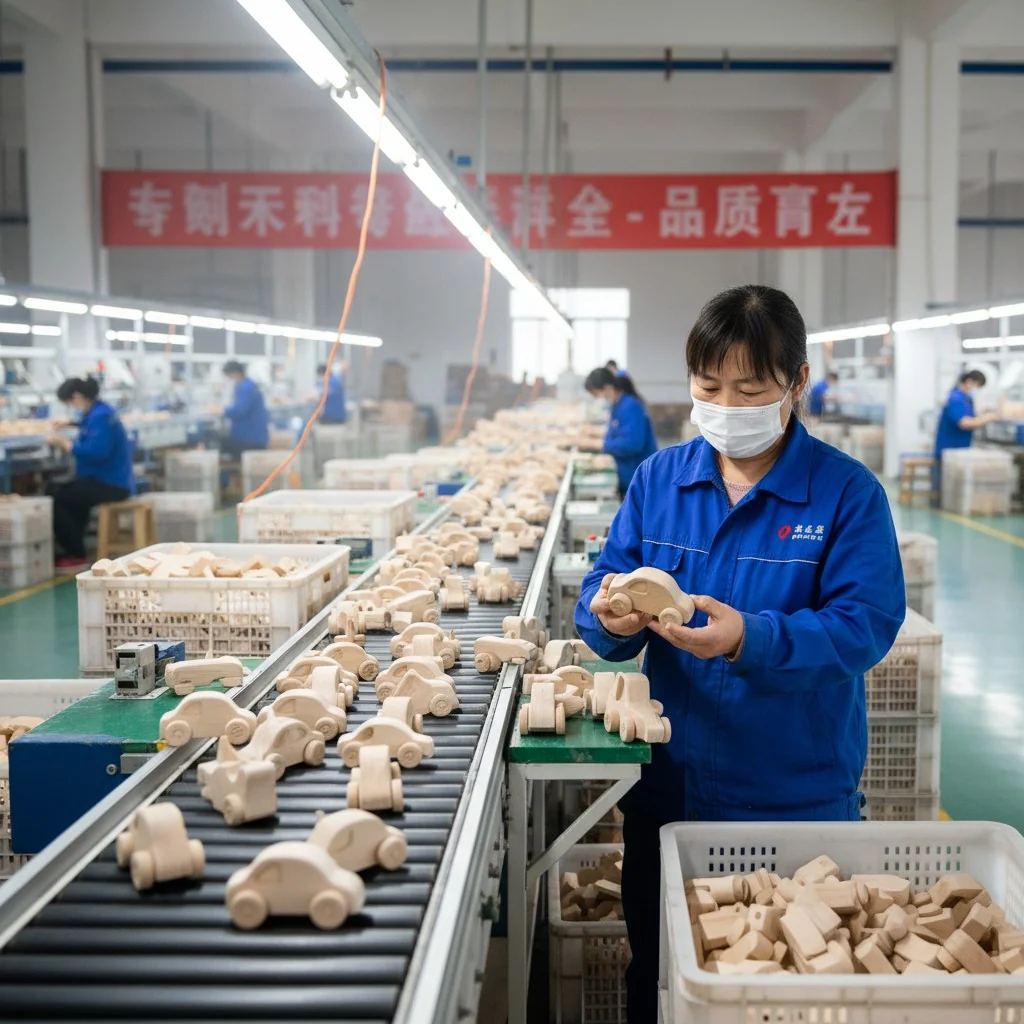
I built my company by connecting clients with the right factories in China. The secret isn't just finding the cheapest option. It's about finding a reliable partner who understands your vision and protects your interests. With over 15 years of OEM and ODM[^4] experience, I've learned what separates the great suppliers from the rest. A good partner acts as an extension of your team. They provide personalized services to make the process seamless.
1. Vet Your Partner: OEM vs. ODM
- OEM: You provide the complete design, and the factory manufactures it for you. This gives you full creative control.
- ODM: You choose a pre-existing design from the factory's catalog and customize it with your branding. This is faster and requires less R&D investment.
A great partner offers both. They can manufacture your unique design or help you adapt one of their existing ones. Ask for their portfolio and client references.
2. Communication is Everything
Language barriers and time differences can cause major problems. Your partner should have a dedicated, English-speaking project manager. They should provide regular updates and be responsive to your questions. Clear, consistent communication is the foundation for on-time delivery.
3. Insist on Quality Control
Quality isn't something you check at the end. It must be built into every step of the process.
| Production Stage | Quality Control Checkpoint |
|---|---|
| Raw Materials | Inspect wood for moisture, cracks, and knots. Verify paint safety certificates. |
| During Production | Check dimensions, smoothness, and assembly of semi-finished parts. |
| Final Assembly | Conduct a 100% inspection for defects, function, and packaging accuracy. |
| Pre-Shipment | Perform a final random inspection (AQL) to verify the entire batch meets standards. |
You should always choose the factory with the lowest price.False
The lowest price often comes with hidden costs, such as poor quality, production delays, or unsafe materials. A slightly higher price from a reputable manufacturer is an investment in reliability and safety.
A factory with a long history of ODM projects is a good sign.True
Extensive ODM experience means the factory understands product design, market trends, and safety compliance. They have proven designs that can be quickly adapted for your brand, reducing your R&D risk and time to market.
How can you cut down wooden toy costs without sacrificing quality?
Your budget is tight. High manufacturing costs can stop your project before it even starts. You're worried that cutting costs means you'll end up with a cheap, low-quality product.
You can lower costs by optimizing your design for manufacturing (DFM), choosing cost-effective materials[^5], and leveraging economies of scale. A good manufacturing partner will help you find these savings without compromising the toy's safety or appeal.
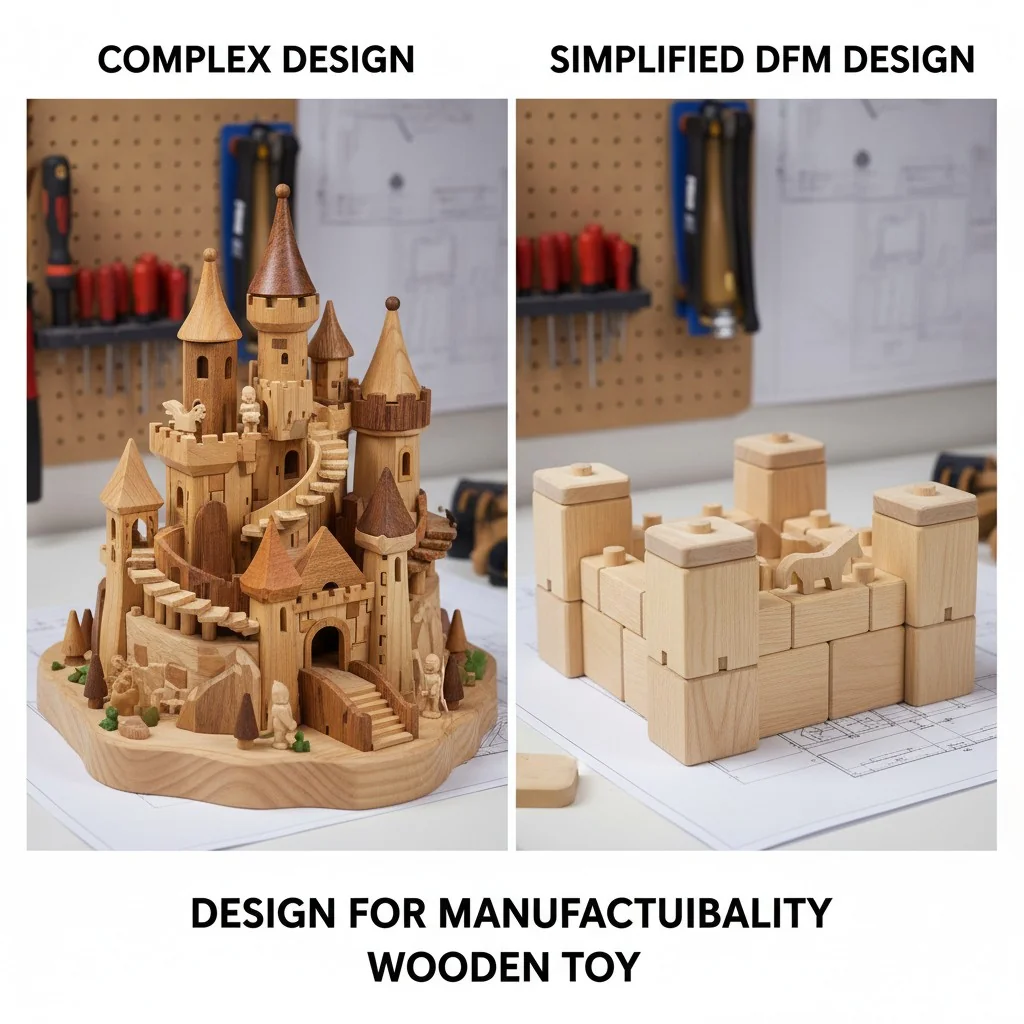
Every designer, including experienced ones like Jacky, faces pressure to reduce costs. In my trading business, helping clients manage their budget was a huge part of my job. It's a balancing act. You want a great product, but it has to be profitable. The good news is there are smart ways to cut costs. It's not about being cheap; it's about being efficient.
1. Design for Manufacturability (DFM)
This is the most effective way to reduce costs. Small changes in your design can have a big impact on production time and material waste.
- Simplify Shapes: Complex curves and intricate cuts require more time on CNC machines. Simplifying shapes can drastically lower machining costs.
- Reduce Parts: Can two parts be combined into one? Fewer parts mean less assembly time and lower labor costs.
- Standardize Components: Using standard-sized dowels or wheels is cheaper than creating custom ones.
2. Smart Material and Packaging Choices
While premium wood like Beech is excellent, sometimes Birch or even high-quality plywood is a better choice for certain parts to manage costs. Your packaging is another area to save. A well-designed but simple cardboard box is often more cost-effective and eco-friendly than complex plastic packaging. We offer a wide selection of toys and packaging options to fit your budget.
3. Leverage Economies of Scale
The per-unit cost of a toy goes down as your order quantity goes up. This is because the factory's setup costs are spread across more units.
| Order Quantity | Price Per Unit (Example) |
|---|---|
| 500 units | $10.00 |
| 1,000 units | $8.50 |
| 3,000 units | $7.00 |
| 5,000 units | $6.25 |
Planning for a larger production run, if possible, is one of the most direct ways to lower your cost per toy.
Using cheaper, softer wood is always a good way to save money.False
While softer woods like pine are less expensive, they are also less durable and can dent or splinter easily. This can lead to safety issues and a poor customer experience, making it a bad choice for high-impact toys.
Reducing the amount of paint on a toy can lower its cost.True
Paint and the labor to apply it are significant costs. Designing a toy that showcases the natural wood grain with minimal painted areas can reduce expenses while also creating a desirable, eco-friendly aesthetic.
What tests and factory audits are necessary for wooden toys?
You're worried about safety. A recall or, worse, a child getting hurt by your product would be devastating for your business and reputation. Navigating international safety standards[^6] seems impossible.
Your toys must pass safety tests for standards like ASTM F963 (USA) and EN71 (Europe). Your factory should have social compliance audits like BSCI and quality management certifications like ISO 9001. This ensures your product is both safe and ethically made.
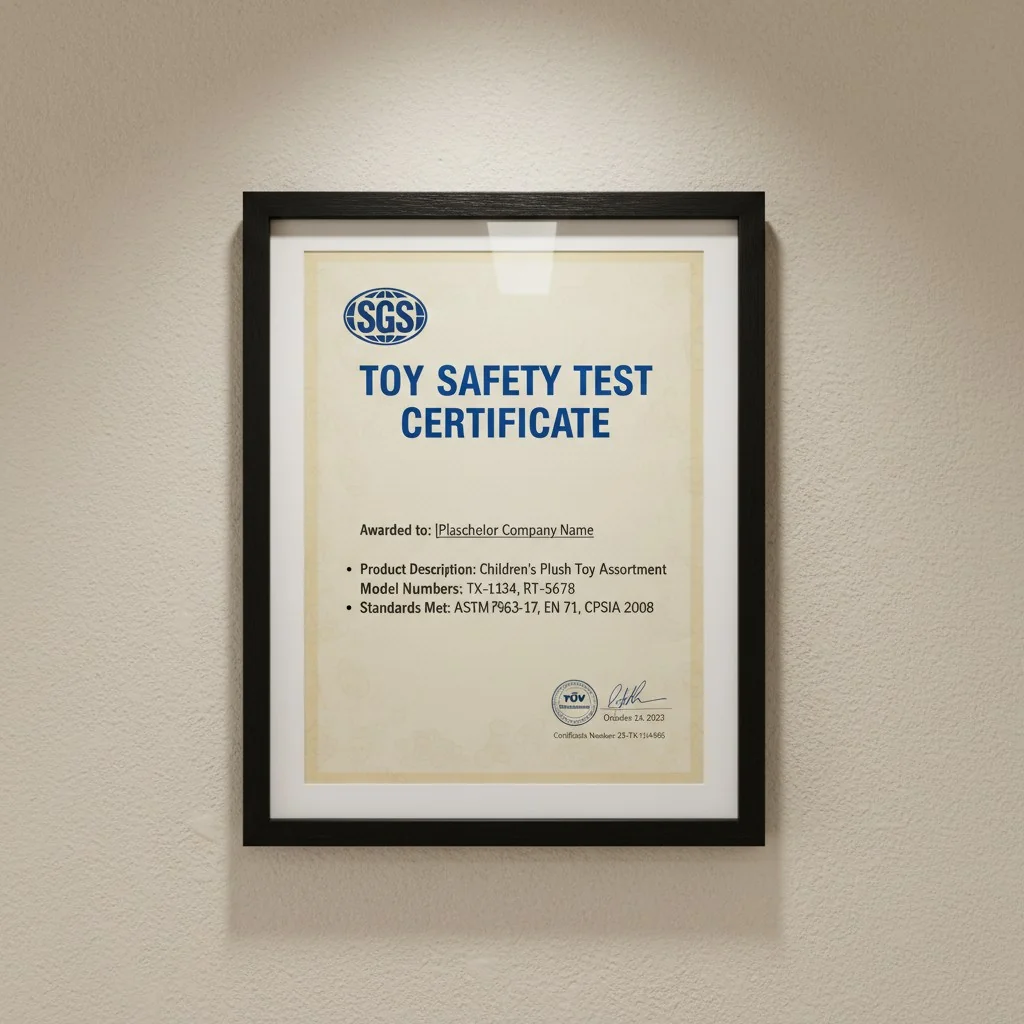
This is non-negotiable. In my career, I've seen companies ruined by cutting corners on safety. That's why we have built close partnerships with top testing labs like SGS, TUV, and Intertek. These partnerships are not just a logo on our website; they are a core part of our process. We manage the entire testing process for our clients to guarantee every product we ship is safe.
1. Key Toy Safety Standards
These standards are legal requirements in their respective markets. They cover a wide range of potential hazards.
- ASTM F963 (USA): Covers physical and mechanical properties (like small parts and sharp edges), flammability, and chemical content (especially lead and heavy metals).
- EN71 (Europe): Similar to ASTM but with some different requirements. It's a series of standards covering everything from mechanical properties to chemical safety and flammability.
2. Important Factory Audits
Audits tell you about the factory's operations and ethics.
- BSCI (Business Social Compliance Initiative): This audit focuses on ethical and social issues, like fair wages, working hours, and workplace safety. It shows the factory treats its workers fairly.
- ISO 9001: This is a certification for quality management systems. It proves the factory has reliable processes for consistently producing high-quality products.
3. Common Tests Performed by Labs
Third-party labs provide unbiased proof that your toy is safe.
| Test Category | What It Checks For |
|---|---|
| Physical & Mechanical | Small parts (choking hazard), sharp points, sharp edges, drop tests. |
| Chemical | Levels of lead, phthalates, and other heavy metals in paints and materials. |
| Flammability | How quickly the material catches fire and burns. |
A factory audit certificate is valid forever.False
Factory audits like BSCI and ISO 9001 are only valid for a specific period, typically one to three years. You must always check the expiration date on the certificate to ensure it is current.
Passing safety tests in one country means the toy is safe to sell worldwide.False
Different regions have their own specific safety standards. A toy that passes ASTM F963 for the US market must still be tested against EN71 to be sold legally in Europe.
Conclusion
Developing a wooden toy is a detailed journey. With the right knowledge and a reliable manufacturing partner, you can confidently turn your vision into a safe, high-quality, and successful product.
